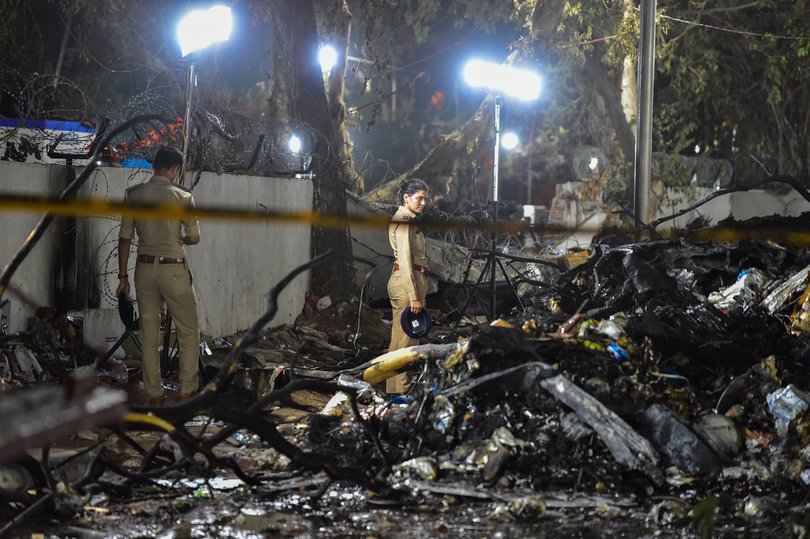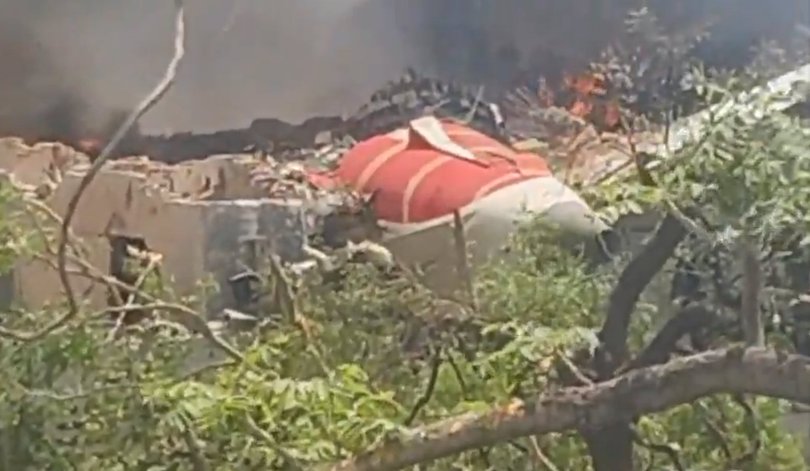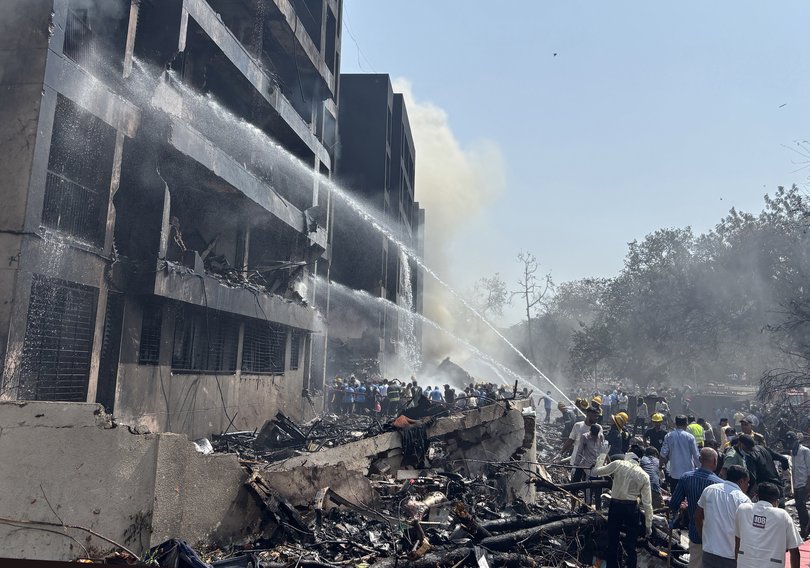AARON PATRICK: Did a flock of geese cause the Air India Flight 171 plane crash?
From the time Air India flight 171’s front wheels left the runway at Ahmedabad Airport to the moment the Boeing 787-8 ploughed into a medical-training accommodation block 2km away was only 31 seconds.
Understanding what happened in that half-minute, based on information from the flight-data recorder, will be the focus of air crash investigators. Their work will be important for travellers across the world, including Australians. The best-selling widebody aircraft ever built, this is the first time in almost 5 million flights that a 787 has crashed in the 14 years it has been in operation.
Flight 171, which flew to Melbourne in the past two weeks, never got higher than 200 metres, suggesting its two engines either lost power or were not set properly. A full loss of power on takeoff due to a technical fault in a modern passenger aircraft is considered almost inconceivable, leading to intense speculation about why the plane could not get properly airborne.
Sign up to The Nightly's newsletters.
Get the first look at the digital newspaper, curated daily stories and breaking headlines delivered to your inbox.
By continuing you agree to our Terms and Privacy Policy.Anomalies
In this case, the publicly available footage shows two anomalies: the doomed Dreamliner’s undercarriage is never raised, and the wing flaps seem to be retracted.
Flaps are long, narrow sections on the rear edge of wings. Extended, they allow the aircraft to fly at lower speeds. Pilots say it is a regular procedure to extend the 787’s flaps when taking off, especially if the aircraft is fully fuelled, as Flight 171 was.
The aircraft’s wheels should have been retracted almost as soon as they left the tarmac. Even though Dreamliners have enough power to fly with their wheels down, the undercarriage will slow the plane.
One theory is that a flock of birds was sucked into the engines, killing all power to the aircraft, including the undercarriage. “One educated guess is that the 787 was brought down by a large flock of geese that flew into the engine compartment, shutting down both engines,” an investment manager based in Chicago, Gary Black, wrote on social media.
There is a historical precedent for a bird strike. In January, 2009, a US Airways flight leaving La Guardia Airport in New York hit a flock of Canada Geese at 859 metres altitude. Both engines stopped working and the Airbus 320 landed in the Hudson River. No one died.


What about the flaps?
A problem with the bird theory is that it would not explain what happened to the flaps.
Studies into catastrophic air crashes have shown most are caused by a combination of mistakes, or a fault missed by several people. Could the flaps been left retracted by mistake, limiting the plane’s range when its engines cut out?
Flight 171’s lead pilot, Sumeet Sabharwal, who died with all his crew and all but one passenger, had logged 8,000 hours flying, making him highly experienced. But his deputy, Clive Kundar, had a relatively modest 1100 hours flying time. They relied on mechanics and ground crew to make the plane safe to fly.
“With the facts we have available now, there seems to be no other likely explanation than engine and hydraulic failure, based on the clear video footage,” an aviation safety expert, Josh Wood, wrote on the Airlineratings website.
“There is no visible explosion before impact, and we can discount weather factors such as ice. The aircraft had its gear seemingly deployed, which suggests they possibly could not be retracted—pointing to a possible engine and subsequent hydraulic failure.”

Qantas connection
The importance of ground staff to aviation safety was demonstrated four years ago in the case of a Qantas Airways Boeing 787. After the plane left Sydney for Perth on 21 June, 2021, the pilots could not get the two rear wheels to retract into the wings. They returned to the airport and landed safely.
Investigators determined Qantas contractors had failed to remove two metal pins from the landing gear. The pins, which prevent the wheels being retracted while the plane is on the ground, were attached to red streamers that had the words “Remove before flight” printed on them.
A ground crew member responsible for removing undercarriage pins took three out. Not realising there were five on the 787, he left two in. A pilot who checked the exterior of plane beforehand did not notice the streamers, which may have been dirty or wrapped around the landing gear.
In the seconds before Flight 171 hit buildings, the nose lifted up. Known as a flair, the manoeuvre is used to slow a plane down just before landing. In this case, Captain Sabharwal may have hoped to reduce the loss of life to people on the ground from his 227-tonne jet.

